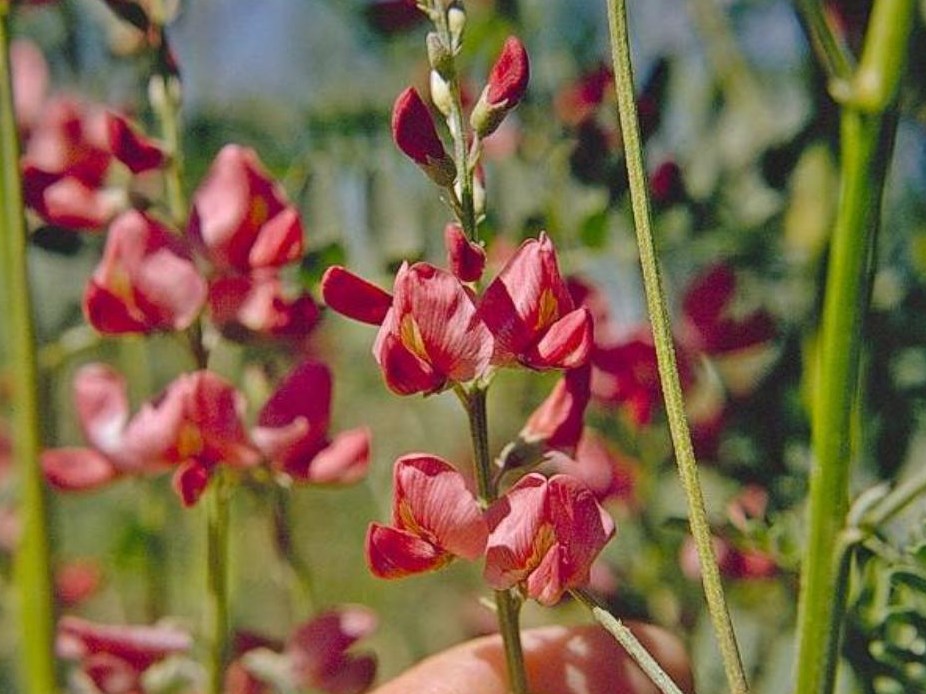Created by: Ramona Robison
Created on: Tuesday, Sep 20th, 2016
Created on: Tuesday, Sep 20th, 2016
Yes or No:
Yes
Points:
1
Confidence Level:
High
Answer / Justification:
Extirpated from California (Jepson). Occurs in other western states and Canada (USDA NRCS).
Reference(s):
Yes or No:
Yes
Points:
2
Confidence Level:
High
Answer / Justification:
Extirpated from California (Jepson). Occurs in other western states and Canada (USDA NRCS). The distribution of S. salsula matches California in Washington, Oregon, Nevada, Idaho, Utah, and Montana according to the Cal-IPC climate map.
Reference(s):
Yes or No:
Yes
Points:
2
Confidence Level:
Medium
Answer / Justification:
S. salsula seeds are contaminants in Alfalfa seed and are difficult to separate because they are similar size and weight. Therefore invasiveness is based on economic impacts to crops.
Reference(s):
Yes or No:
Yes
Points:
3
Confidence Level:
Medium
Answer / Justification:
S. salsula seeds are contaminants in Alfalfa seed and are difficult to separate because they are similar size and weight. Therefore invasiveness is based on economic impacts to crops. The distribution of S. salsula matches California in Washington, Oregon, Nevada, Idaho, Utah, and Montana according to the Cal-IPC climate map.
Reference(s):
Yes or No:
No
Points:
0
Confidence Level:
High
Answer / Justification:
S. salsula is the only species of Sphaerophysa listed in Randall (2012).
Reference(s):
Yes or No:
Yes
Points:
2
Confidence Level:
Medium
Answer / Justification:
The distribution of S. salsula is not well documented in its native range, but appears to be predominately similar to California based on the Cal-IPC climate map.
Reference(s):
Yes or No:
Yes
Points:
1
Confidence Level:
Low
Answer / Justification:
It has high potential for establishment along streams, irrigation canals, waste ways, pastures and meadows with a high water table. Has become a problem in some poorly drained marshy, or saline areas of the Western U.S. (DiTomaso 2013). It is possible that it could displace native plants or dominate natural communities in these areas.
Reference(s):
Yes or No:
No
Points:
0
Confidence Level:
Low
Answer / Justification:
There is not evidence that S. salsula promotes or changes fire regimes.
Reference(s):
Yes or No:
Yes
Points:
1
Confidence Level:
High
Answer / Justification:
Unpalatable to humans and livestock (DiTomaso 2013).
Reference(s):
Yes or No:
No
Points:
0
Confidence Level:
Low
Answer / Justification:
S. salsula can reach 5 feet in height, but there is no documentation that it forms impenetrable thickets or blocks movement of animals or humans.
Reference(s):
Yes or No:
Yes
Points:
1
Confidence Level:
High
Answer / Justification:
Reproduces by seed and vegetatively from creeping roots (CDFA).
Reference(s):
Yes or No:
Yes
Points:
1
Confidence Level:
High
Answer / Justification:
Reproduces by seed and vegetatively from creeping roots.
Reference(s):
Yes or No:
Yes
Points:
1
Confidence Level:
High
Answer / Justification:
Reproduces by seed and vegetatively from creeping roots.
Reference(s):
Yes or No:
Points:
Confidence Level:
Answer / Justification:
There is no evidence on the number of seeds produced by S. salsula per year.
Reference(s):
Yes or No:
Yes
Points:
1
Confidence Level:
Medium
Answer / Justification:
In one study, the germination percentage of S. salsula seed before storage was 30% (Ju-Hong 2012).
Reference(s):
Yes or No:
Points:
Confidence Level:
Answer / Justification:
There is no information on the time it takes from germination for S. salsula to form viable seeds.
Reference(s):
Yes or No:
Points:
Confidence Level:
Answer / Justification:
Flowering occurs from May to July. There is no information on the length of seed production.
Reference(s):
Yes or No:
No
Points:
0
Confidence Level:
High
Answer / Justification:
There is no evidence that S. salsula seeds are dispersed by animals.
Reference(s):
Yes or No:
Yes
Points:
1
Confidence Level:
Low
Answer / Justification:
It is possible that S. salsula seeds could be dispersed by water since "it has high potential for establishment along streams, irrigation canals, waste ways, pastures and meadows with a high water table. Has become a problem in some poorly drained marshy, or saline areas of the Western U.S. (DiTomaso 2013)."
Reference(s):
Yes or No:
Yes
Points:
1
Confidence Level:
Medium
Answer / Justification:
The main dispersal mechanism of S. salsula is assumed to be contaminated seed since the seeds are similar in shape and weight to alfalfa seeds (DiTomaso 2013 and CDFA).
Reference(s):
CDFA: https://www.cdfa.ca.gov/plant/ipc/encycloweedia/weedinfo/sphaerophysa-sa...
Nevada: http://agri.nv.gov/Plant/Noxious_Weeds/WeedList/Swainsonpea_(Sphaerophysa_salsula)/
Reviewed by Ron Vanderhoff and Irina Irvine.
- < 13 : accept (low risk of invasiveness)
- 13 - 15 : evaluate further
- > 15 : reject (high risk of invasiveness)
PRE Score:
18
Number of questions answered:
17
Screener Confidence (%):
64.7
Organization:
Evaluation visibility:
Public - accessible to all site users

